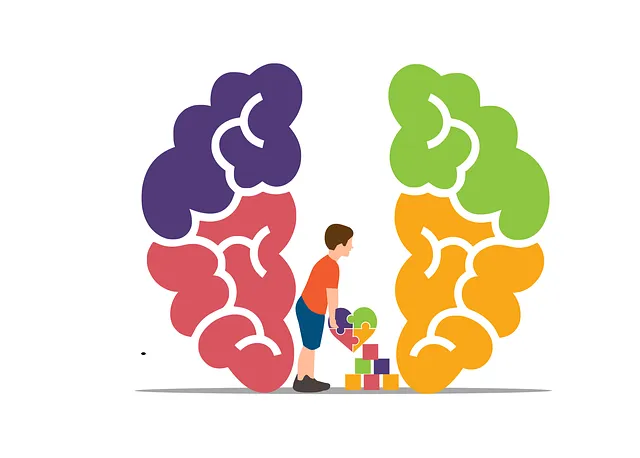Greenwood Village's Kaiser Permanente offers innovative inpatient mental health services and educational workshops to dispel stereotypes, foster empathy, and reduce stigma. They, along with other organizations, aim to enhance patient experiences through evidence-based practices, creative therapies, and peer support. Accurate media representation of these services is crucial for promoting help-seeking behaviors and challenging harmful misconceptions about mental illness. Community collaboration in media storytelling transforms perceptions, fosters compassion, and drives positive social change, ultimately shaping more inclusive mental health policies.
Mental illness representation in media significantly influences societal perceptions and understanding of mental health. This article explores the impact of media portrayal, focusing on the strategies employed by institutions like Kaiser and Greenwood Village to address inpatient care. We delve into the challenges of accurate depiction and propose solutions through enhanced representation and community collaboration. Discover how these approaches foster supportive narratives, empower recovery, and challenge stigma, with a special focus on the practices of Kaiser and Greenwood Village in their respective inpatient mental health facilities.
- Understanding the Impact of Media Portrayal on Mental Health Perception
- The Current State: How Kaiser and Greenwood Village Address Inpatient Care
- Challenges in Depicting Mental Illness Accurately in Media
- Strategies for Enhancing Representation: A Case for Positive Change
- Community Collaboration: Empowering Recovery Through Supportive Narratives
Understanding the Impact of Media Portrayal on Mental Health Perception

Media portrayal plays a pivotal role in shaping societal perceptions about mental health. The way mental illnesses are depicted in films, television shows, and news coverage can influence how audiences understand and respond to these conditions. Unfortunately, stereotypes and misconceptions often permeate media representations, leading to negative consequences for individuals living with mental health challenges. For instance, the rarity of serious mental illness portrayed in media can make it seem less prevalent, downplaying the struggle faced by many.
Greenwood Village’s Kaiser Permanente, recognizing this impact, offers inpatient mental health services and initiatives like Stress Management Workshops centered around Mind Over Matter principles to combat these misconceptions. By actively engaging in Mental Health Awareness campaigns, they aim to educate communities about the reality of mental illness, encouraging empathy and support. These efforts are crucial in fostering a more understanding and compassionate society where individuals with mental health concerns can seek help without fear of stigma or misperception.
The Current State: How Kaiser and Greenwood Village Address Inpatient Care

In addressing inpatient mental health care, both Kaiser and Greenwood Village have pioneered innovative strategies to enhance patient experiences and outcomes. Kaiser, a renowned healthcare provider, leverages its vast resources to offer comprehensive treatment programs tailored to individual needs, focusing on evidence-based practices for various mental health disorders. Their approach emphasizes not just clinical care but also empathy building strategies aimed at fostering supportive environments that promote healing.
Greenwood Village, an emerging leader in mental health services, takes a holistic view, incorporating creative therapies and peer support groups into their inpatient program. They have developed a unique mental wellness podcast series production to engage patients and provide accessible coping skills development resources. This multimedia approach caters to diverse learning styles and empowers individuals to actively participate in their recovery journeys.
Challenges in Depicting Mental Illness Accurately in Media

The media plays a significant role in shaping societal perceptions about mental health, yet it often falls short when accurately representing the complexities of various mental illnesses. One of the primary challenges lies in the tendency to stereotype and simplify conditions that are intricate and multifaceted. For instance, depicting depression as mere sadness or anxiety as a fleeting panic attack fails to capture the full spectrum of symptoms and experiences. This oversimplification can lead to misconceptions, causing real harm to individuals struggling with these conditions.
Moreover, the representation of treatment options is crucial. When media portrays mental health crises, such as those experienced in Greenwood Village, it’s essential to show accurate crisis intervention guidance without relying on cliche or dramatic narratives. For example, showcasing the role of inpatient mental health services offered by organizations like Kaiser can provide valuable insight into effective burnout prevention and depression prevention strategies. Such depictions can encourage viewers to seek help when needed and promote understanding of appropriate support systems available in their areas.
Strategies for Enhancing Representation: A Case for Positive Change

The representation of mental illness in media plays a pivotal role in shaping public understanding and perceptions. To foster positive change, it’s essential to strategize enhanced and accurate portrayals. One effective approach is to involve individuals with lived experiences as advisors or consultants during production. This ensures stories are told from authentic perspectives, promoting empathy and challenging stereotypes. Additionally, media platforms can collaborate with mental health organizations to provide educational content, such as documentaries or series that delve into various conditions, offering crisis intervention guidance while dispelling myths.
By incorporating characters with inner strength development arcs, media can showcase resilience and recovery. This is particularly relevant when exploring complex issues like anxiety relief, where nuanced storytelling can help viewers understand the challenges without sensationalizing them. For instance, Greenwood Village does Kaiser have inpatient mental health services? Such real-world connections add credibility to representations, encouraging open conversations about mental wellness. These strategies collectively contribute to a more inclusive and supportive media landscape, ultimately driving positive social change in how mental illness is perceived and addressed.
Community Collaboration: Empowering Recovery Through Supportive Narratives

In the battle against stigma, community collaboration emerges as a powerful tool for transforming mental health discourse in media. By fostering supportive narratives that reflect the realities of individuals navigating mental illness, Greenwood Village, or even Kaiser’s inpatient facilities, can play a pivotal role in empowering recovery. This involves not just representing diverse experiences but also showcasing the strength and resilience inherent in the human spirit.
A collaborative approach extends beyond representation; it encourages emotional intelligence and compassion cultivation practices within communities. Through joint initiatives involving healthcare providers, media professionals, and affected individuals, these narratives can challenge stereotypes and promote understanding. Such efforts are crucial for shaping public perception and advocating for more inclusive mental health policies, as evident in the ongoing Mental Health Policy Analysis and Advocacy discussions.
In addressing the critical issue of mental illness representation in media, we’ve explored the impact of media portrayal on public perception and the importance of accurate depiction. The case studies from Greenwood Village and Kaiser highlight innovative solutions, such as community collaboration and supportive narratives, that can significantly improve inpatient mental health care. By embracing strategies for enhancing representation, media can foster a more empathetic and informed society, ultimately empowering individuals on their path to recovery.






